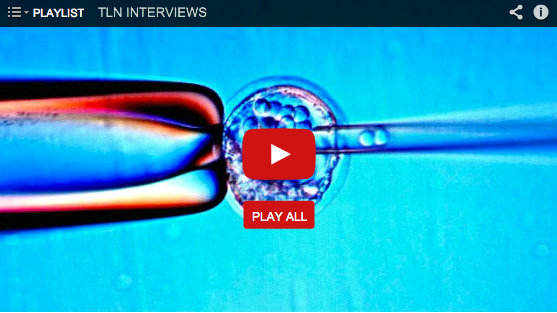Stem Cell Pioneers featured Dr. Riordan in its February installment of “Ask the Doctor”, a monthly segment that features stem cell scientists and doctors answering questions from readers about stem cell therapy.
Over the next several days, we will share these questions and Dr. Riordan’s answers with our readers.
Question: I have heard from patients that you are doing intralymphatic stem cell injections. I think there are a lot of IntraLymph studies on other things like allergies, but none on stem cells that I can find. What is the reasoning behind this new route of administration? If stem cells get stuck in the lungs and we worry about that, why inject them directly into the lymph system where they would go to the spleen?
Dr. Riordan’s Answer: The goal of our treatments umbilical cord mesenchymal stem cells for patients with multiple sclerosis really has nothing to do with repairing the damaged or destroyed myelin in the lesions found in the brain and spinal cord. Because multiple sclerosis is first and foremost an autoimmune disease our goal is to address the immune dysfunction. At the root of the disease is a pool of immune cells called T-cells, which actively proliferate, cross the blood brain barrier, and attack myelin. Our primary goal then is to interfere with myelin-specific T-cell reproduction (something called “clonal expansion’). Mesenchymal stem cells (MSCs) have been shown in multiple studies to have the capacity to block this so-called clonal expansion of activated T cells. In a way MSCs immunosuppress, but unlike some drugs that suppress the immune system this specific blocking of activated T cells does not quash the entire immune system—the cells and their secretions only block the clonal expansion. Other drugs that suppress the immune system—for example hydrocortisone—have an effect on the entire immune system, which can increase the risk of the recipient to infectious diseases and even some cancers.
If it were the goal of the treatment to induce remyelination then certainly the route of delivery would be of greatest importance. You would want for the cells (or whatever proposed remyelination agent) to be as close to the lesions requiring the repair as possible. So I understand the rationale for the question.
In my opinion it will be difficult to successfully treat multiple sclerosis by remyelination alone because if you do not address the immune problem you will continue to lose myelin. Therefore, getting the cells to the lesions for myelin repair is not particularly important. Further support for this opinion is that there is very good evidence that the body has the innate ability to regenerate myelin without intervention. There are two good examples of this. The first example comes from a condition called Guillain–Barré syndrome. The syndrome is an autoimmune disease that results from an immune attack on the myelin of peripheral nerves. There is an ascending paralysis and the condition can be life threatening if the paralysis gets high enough to affect breathing. It is treatable and generally temporary. In 80% of the patients the underlying nerves are not irreparably damaged and there will be no long-term neurologic symptoms. 20% experience permanent nerve damage because the axons of the nerves are damaged. The good news is that the disease is temporary. The better news is that in the mild cases in which the axons were not destroyed, complete remyelination occurs—the body has the capacity to restore myelin.
The second example comes from a phenomenon seen with serial MRI images of the brains in people with MS. Fifty percent of these low intensity lesions known as “black holes” revert within one month of appearance, indicating that remyelination has occurred spontaneously.
Further support for the “treat the immune system and not the Central Nervous System” in MS comes from the work of several groups, including Northwestern University who are using chemotherapeutic “conditioning”, ie. wiping out the immune system (and the by-standing hematopoietic stem cells) followed by bone marrow reconstitution using previously harvested bone marrow stem cells. There are published results of many cases improving without anything having been done to address the myelin loss.
To the question of intra-lymphatic injections: There has been no work on “intra-lymphatic” injections. We are looking into peri-lymphatic (near the lymph nodes) injections of huMSCs for patients who are refractory to intravenous treatment.
Here is a little background on this subject: Dr. Arnold Caplan of Case Western Reserve, the scientist to first describe mesenchymal stem cells, was in Panama last year consulting with us. He also presented at a conference that we cosponsored. In one of my discussions with Dr. Caplan he casually mentioned that whenever they injected mesenchymal stem cells into the abdominal cavity of animals that did not have an active inflammatory process in there in the cavity the MSC’s would automatically go to the abdominal lymph chains. They were able to determine this because they use cells that were labeled with the florescent probe. I found this very interesting given that the 70-80% of the immune cells of your body reside in the abdominal cavity in and around the intestines.
The rationale for peri-lymphatic treatment is relatively simple. Firstly, the goal of therapy in autoimmune disease is to induce immune tolerance in the face of immune intolerance. The majority of the immune cells are found in the lymphatic (which includes the lamina propria) system of the gut. MCSs will, when lacking a more compelling inflammatory signal, migrate to the lymph nodes. Once in the lymph nodes they will migrate and interact with the immune cells (T-cells and T-cell priming dendritic cells). We know for a fact that MSCs interfere with dendritic cell priming of T-cells.
My book will be coming out in April. It will go into greater detail on this subject and many more. There are case histories as well as treatment protocols and rationale for each condition. Information about how to get the book “Mesenchymal Stem Cells: Nature’s Pharmacy” will be on www.Riordanbooks.com, as well as on www.amazon.com.




